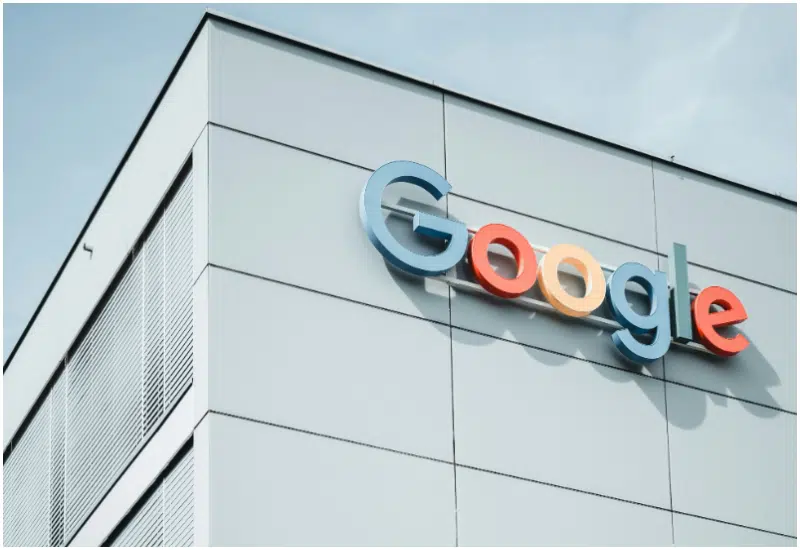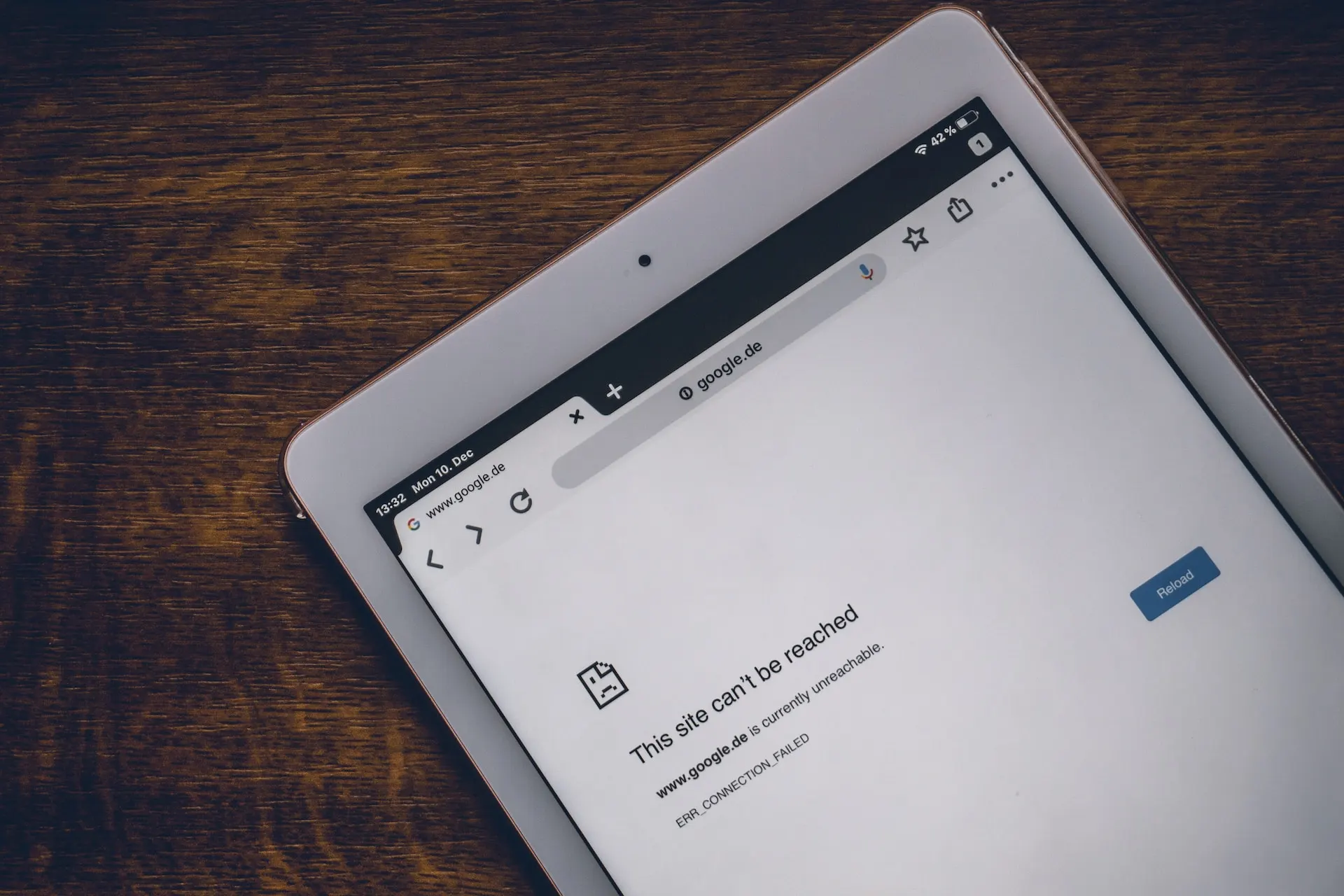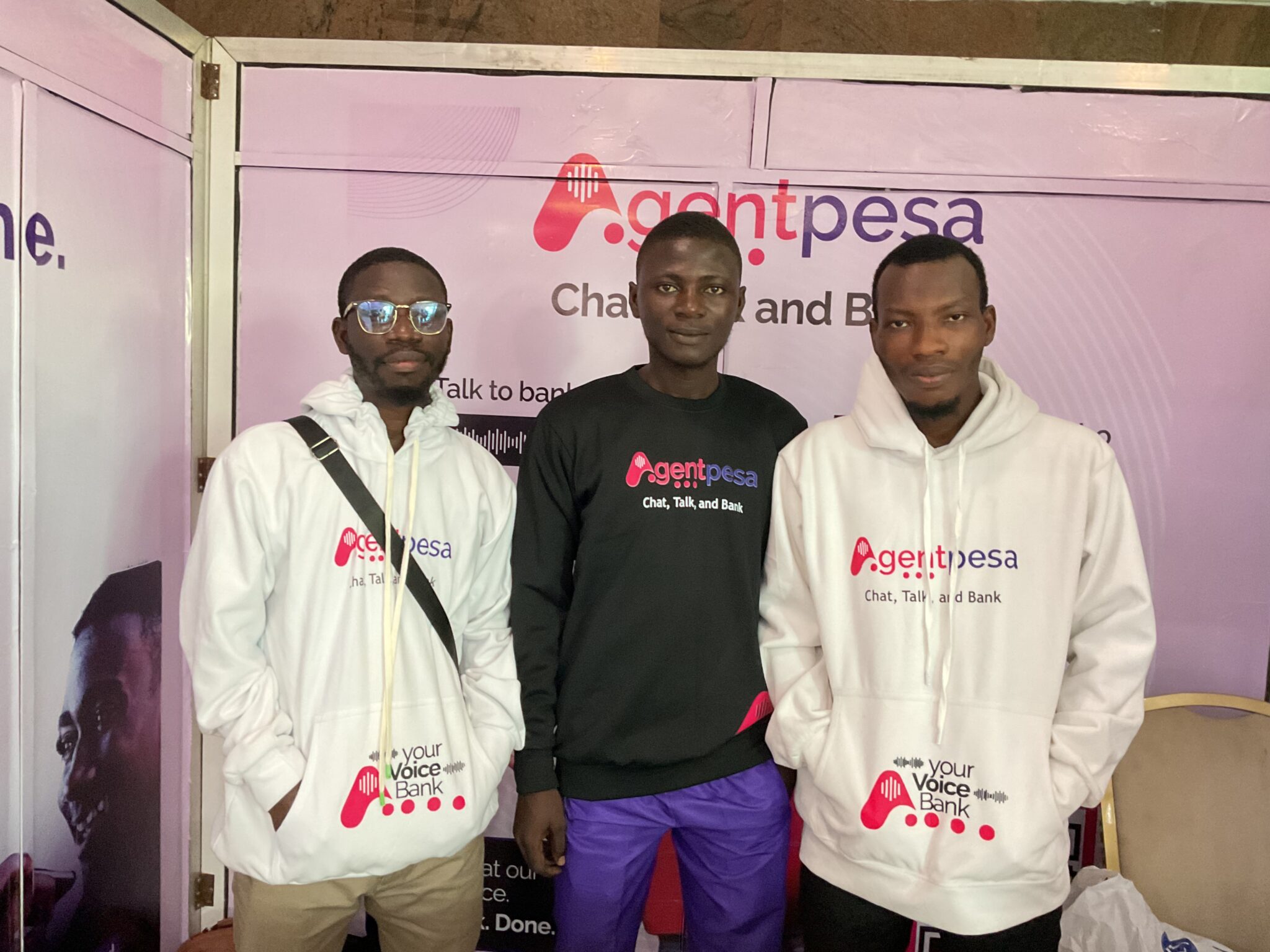Every AI has a prompt as its action trigger. In a mechanical sense, the AI is the car, and the prompt is the driver deciding when to accelerate, turn, or stop.
That’s why it makes sense to review AIs not just for their raw abilities but also for how they handle prompts, receive them, interpret them, and deliver results that meet (or exceed) expectations.
Grok AI and ChatGPT Deep Research each have their own approach to this process. I put them through a series of real tests to see exactly how they “drove” my prompts, where they took me, and whether they reached the destination I had in mind.
Before we get to the results, let’s meet our two contenders in detail.
What is Grok AI about?
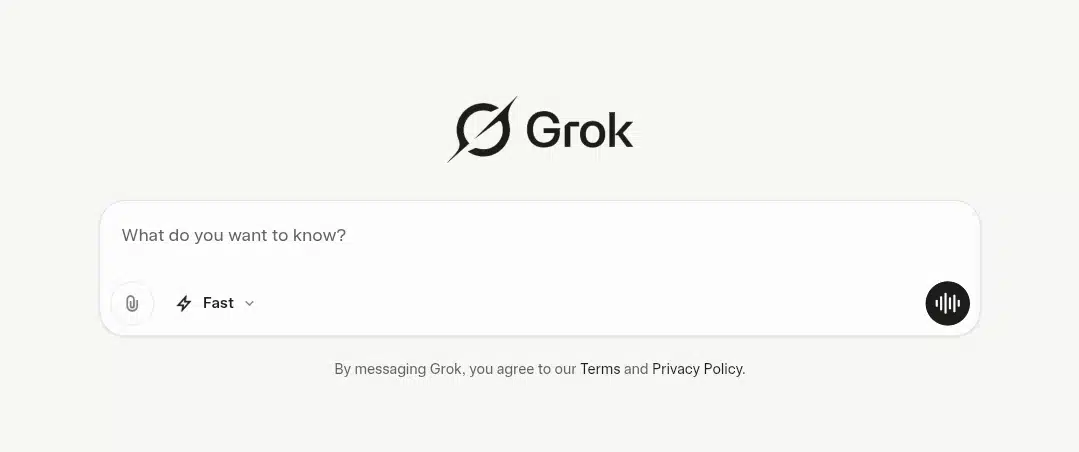
Grok AI is an advanced artificial intelligence chatbot developed by xAI, Elon Musk’s AI company. First unveiled on November 4, 2023, Grok represents a new generation of conversational AI that’s deeply integrated with X (formerly Twitter). The name “Grok” originates from science fiction, referring to the act of comprehending something completely and intuitively.
What makes Grok special is its approach to AI interaction. Unlike other chatbots that might give careful, restricted responses, Grok is designed to be more open and direct in its conversations. The development team at xAI, which includes former researchers from leading AI companies like OpenAI and DeepMind, built Grok, focusing on truth-seeking and real-time information processing.
Grok has made significant changes since its launch. Initially available only to X Premium+ subscribers during its beta phase, it expanded to all X Premium subscribers in March 2024. The development timeline shows impressive progress: Grok-1 was released as open source in March 2024, followed by Grok-1.5, which features improved reasoning and a 128,000-token context length. Grok-1.5 Vision arrived in April 2024, adding visual understanding capabilities.
In August 2024, Grok-2 introduced image generation features. The platform grew with an API release in October 2024 and the Aurora text-to-image model in December 2024. February 2025 introduced Grok-3, featuring reflection capabilities and the powerful DeepSearch function. March 2025 added image editing capabilities and DeeperSearch, an enhanced research tool. Most recently, in July 2025, Grok-4 was launched, breaking various industry performance records, along with Grok Heavy, a high-performance version.
Now that you know what Grok AI is, the next question is how to actually use it. Let’s look at the different ways you can access its tools and features.
How can you access Grok AI and its features?
Accessing Grok AI is straightforward through multiple channels, each designed to provide a seamless user experience across different platforms.
Browser Access Through Direct Website
You can access Grok directly through your web browser by following these simple steps. Open your preferred browser, such as Chrome, Firefox, or Safari, then type “Grok AI” in the search bar or navigate directly to the official website. You’ll find a “Sign Up” button on the top right corner of the screen. Click this button to open a registration form that offers multiple sign-up options, including X account, email address, Apple ID, or Google account. Choose your preferred method, confirm your selection, and complete the verification process. The entire registration takes just seconds, and you’ll be signed in immediately to start using Grok AI and its features.
Access Through X Integration
Since Grok AI is integrated with X, you can access it directly through your X account. Log in to X.com using your existing credentials or create a new account if needed. X Premium or Premium+ subscribers get full access to Grok’s capabilities directly within the X interface, making it easy to switch between social media interactions and AI assistance.
Mobile App Downloads
Grok is available for mobile users through dedicated applications in both major app stores. Visit the Google Play Store on Android devices or the Apple App Store on iOS devices, search for the official Grok app, and download it to your device. The mobile app provides complete feature access with an interface optimized for touch interactions and on-the-go usage.
What are Grok AI’s features?
Grok AI offers a comprehensive suite of features to handle diverse user needs and complex tasks.
DeepSearch
DeepSearch represents Grok’s most powerful research capability. This feature conducts thorough investigations across multiple web sources, analyzing and synthesizing information to create comprehensive reports. The system can process vast amounts of data quickly, providing detailed insights that would typically require extensive manual research time.
Think Mode
Think mode enables Grok to engage in step-by-step reasoning for complex problems. This feature is handy for analytical tasks, mathematical calculations, logical problem-solving, and situations requiring careful consideration of multiple factors before reaching conclusions.
Real-Time Information Processing
Grok maintains current awareness through continuous access to live data streams from X and other web sources. This capability ensures responses include the most recent developments, breaking news, trending topics, and ongoing discussions across various platforms.
Image Creation and Analysis
The platform includes advanced image generation capabilities, allowing users to create visual content based on text descriptions. Additionally, Grok can analyze uploaded images, provide detailed descriptions, answer questions about visual content, and offer insights based on image analysis.
Personality Modes
Grok offers multiple personality configurations to match different user preferences and use cases. These include Companion mode for supportive interactions, Unhinged Comedian mode for humorous exchanges, Loyal Friend mode for casual conversations, Homework Helper mode for educational support, Doc mode for professional consultations, and Therapist mode for thoughtful discussions. Each personality adjusts Grok’s communication style while maintaining its core capabilities.
Latest News Integration
The system provides dedicated news tracking and analysis, informing users about current events across various topics, including politics, technology, sports, entertainment, and global affairs. This feature combines real-time monitoring with analytical insights to deliver comprehensive news coverage.
We’ve seen how Grok works, but ChatGPT has its own unique path to making research easy. Let’s explore how you can get started with it and put its Deep Research to use.
How did ChatGPT and Deep Research come to be?
ChatGPT is an artificial intelligence chatbot developed by OpenAI, which was launched publicly on November 30, 2022. This AI assistant quickly became a global phenomenon, reaching 100 million users in just two months and becoming the fastest-growing consumer app in internet history.
When ChatGPT first launched, it impressed people with its ability to engage in natural conversations, write essays, assist with coding, and answer complex questions. Built on OpenAI’s GPT technology, it could understand what users were asking and respond in a helpful, human-like way. The initial version ran on GPT-3.5, which was already resourceful for its time.
OpenAI continued improving ChatGPT with better models and new features. A major update, GPT-4, on March 14, 2023, made the system much more intelligent and capable. Then came GPT-4o in May 2024, bringing even more advanced features to users.
The most recent major update happened in December 2024, when OpenAI added Deep Research to ChatGPT. This new feature transforms ChatGPT from a chatbot into a thorough research tool that can search the web, analyze information from multiple sources, and create detailed reports on complex topics. This shows how ChatGPT has grown from a simple question-and-answer tool into a complete research assistant.
Deep Research was first made available for ChatGPT Pro users with a 100-query-per-month cap, with plans to expand access to Plus, Team, and Enterprise subscribers. The feature is now available on all ChatGPT platforms, including web, iOS, Android, macOS, and Windows.
How can you start using ChatGPT and its Deep Research?
Accessing ChatGPT is straightforward and available through multiple platforms to suit different user preferences and needs.
Web-Based Access
You can access ChatGPT directly through your web browser by visiting the official website. Open your preferred browser, such as Chrome, Safari, or Firefox, navigate to the ChatGPT homepage, and look for the “Sign Up” or “Log In” button. Click this button to open a registration form where you can create an account using your email address, Google account, or Microsoft account. Choose your preferred sign-up method, verify your email if required, and complete the registration process. Once signed up, you’ll immediately access ChatGPT’s features (deep research inclusive) through the web interface.
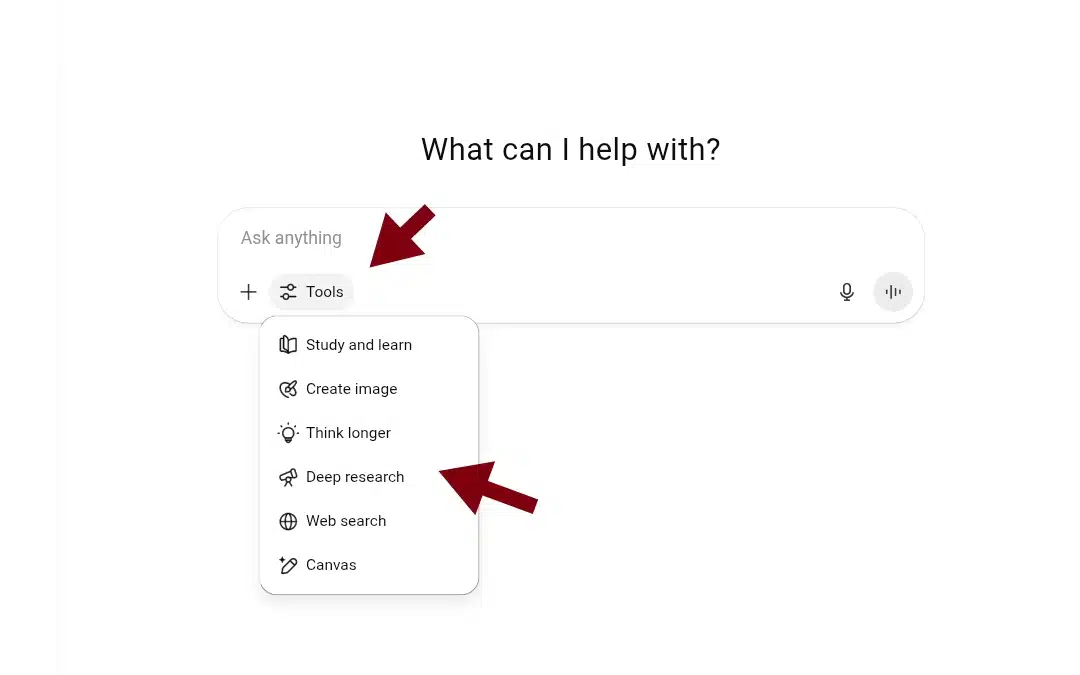
Mobile and Desktop Applications
ChatGPT is available through official apps on major platforms for users who prefer dedicated applications. Visit the Google Play Store on Android devices or the Apple App Store on iOS devices, search for the official ChatGPT app by OpenAI, and download it to your device. The mobile apps provide full functionality optimized for touch interfaces and mobile use.
Desktop users can access dedicated applications for both macOS and Windows systems. These applications offer native performance and integration with your operating system, making accessing ChatGPT alongside other desktop applications easy.
Once you’re set up, you’ll want to know what ChatGPT can actually do for you. So, let’s look at its key features.
What are ChatGPT’s key features?
ChatGPT provides comprehensive features designed to assist with various tasks and use cases.
Deep research
Deep Research represents ChatGPT’s most advanced research capability, conducting multi-step research on the internet for complex tasks. This feature acts as an autonomous research agent that can plan, execute, and synthesize information from multiple online sources to create comprehensive reports on complex topics.
Advanced text generation
ChatGPT generates human-like text for various purposes, including creative writing, technical documentation, emails, essays, and conversational responses. The system can adapt its writing style to match specific requirements, audiences, and contexts.
Code generation and programming support
The AI provides robust coding assistance across multiple programming languages. It can write code snippets, debug existing code, explain programming concepts, and help with software development projects from simple scripts to complex applications.
Image understanding and analysis
Through GPT-4 Vision capabilities, ChatGPT can analyze and understand images uploaded by users. It can describe visual content, answer questions about images, read text from pictures, and provide insights based on visual information.
Mathematical and analytical capabilities
ChatGPT can handle complex mathematical calculations, solve equations, perform statistical analysis, and work through logical problems step-by-step. This makes it valuable for educational support and professional analytical tasks.
Memory and context retention
The system can remember information from previous conversations within a session and maintain context across multiple interactions. This enables ChatGPT to have more natural, flowing conversations and build upon previous discussions.
Customization and personalization
Users can adjust ChatGPT’s behavior through custom instructions and preferences, allowing the AI to adapt to specific communication styles, professional needs, or personal preferences for more tailored interactions.
With both platforms covered, it’s time to compare how they handle limit usage and pricing for their research features.
How Grok AI and ChatGPT’s Deep Research handle their limit usage and pricing
Here’s where similarities show more. These two platforms couldn’t be more different in how they let you use their research features.
Grok AI’s approach is this: You pay for a subscription and use DeepSearch and other answer models, such as Fast, Expert, Auto, etc., as much as you want. There are no counting tasks, monthly limits, or running out halfway through an important research project.
ChatGPT goes the opposite route: Everything is measured and counted. You get a specific number of research tasks each month, and when they’re gone, you either wait or get reshuffled to a lighter version. It is just like wifi or airtime. There is how much each AI costs:
Grok AI
- Basic (Free Plan):
- Limited access to the Grok 3 model only
- No access to Grok 4’s advanced DeepSearch capabilities
- Basic search functionality with reduced performance
- SuperGrok ($300/year or $30/month):
- Full access to Grok 4 with integrated DeepSearch
- Replaces Grok 3 Think functionality with enhanced reasoning
- 128,000 token context memory for comprehensive research
- Voice with vision capabilities
- Unlimited usage within fair use policies
- SuperGrok Heavy ($3,000/year or $300/month):
- Access to Grok 4 Heavy before everyone else
- Double the context memory (256,000 tokens), which is perfect for handling massive research projects
- First to try new features when they launch
- Faster processing speeds and better performance, total package
ChatGPT Deep Research usage limits
- Free Plan Users:
- 5 Deep Research tasks per month using the lightweight version only
- No access to the standard, more robust model
- Suitable for basic research needs with limited complexity
- Plus, Team, Enterprise, and Edu Plans:
- 10 standard model tasks per month (full capability)
- 15 additional lightweight tasks after the standard quota is exhausted
- Total: 25 research tasks per month
- Automatic switching between models maintains workflow continuity
- Pro Plan Users:
- 125 standard model tasks per month (maximum capability)
- 125 additional lightweight tasks for extended usage
- Total: 250 research tasks per month
- Highest tier access with substantial research capacity
Which subscription gives more for less?
Suppose you’re just getting started or need occasional help. In that case, ChatGPT’s free tier gives you 5 research tasks monthly, which beats Grok’s free version that only offers basic Grok 3 access without the advanced research capabilities you actually want.
If you do research regularly but don’t want to break the bank, this is where you might get caught in a decision-making web. ChatGPT Plus at $20/month gives you 25 research tasks total, while Grok’s SuperGrok at $30/month lets you research unlimited times with better context memory. If you ask me, that extra $10 might be worth it if you tend to research excessively.
If you’re a research-heavy user who can’t afford interruptions, ChatGPT Pro costs $200/month for 250 tasks. Still, Grok’s SuperGrok Heavy at $300/month gives you unlimited access to their most advanced model with double the context memory. Plus, you get first access to new features as they roll out.
So, the subscription that gives more depends on whether you prefer knowing exactly how much you can use each month (ChatGPT deep research) or never having to think about limits (Grok AI).
Before revealing the testing results, sharing the method behind the comparison is essential. This will give you a clear picture of how I tested both tools.
The criteria i used in evaluating Grok AI and ChatGPT Deep Research
To make a balanced comparison between these two AI research tools, I tested both platforms using three different prompts.
1. OPPO vs Samsung (Opinion Piece)
- Write an in-depth opinion article comparing which Android brand —OPPO or Samsung — currently offers the most enjoyable overall user experience. Evaluate design, camera quality, performance, software features, ecosystem, and value for money, using examples from their latest flagship and mid-range models. Present a reasoned conclusion on which brand provides the better experience, supported by factual points but written in a personal, opinion-based tone.
2. EU AI Act 2025 (Research Summary)
- Summarize the 2025 EU AI Act in clear, concise language, focusing on its main provisions, objectives, and impact on AI developers, businesses, and users. Use only up-to-date and credible sources from government websites, reputable news outlets, and expert analysis, and cite each source properly.
3. Trend-focused Research
- Gather and summarize the latest developments in the current season of Big Brother Naija from the last 2 weeks, including trending topics on X (Twitter), Instagram, and entertainment news sites. Highlight the most talked-about housemates, notable events, and public sentiment, with proper citations from each source.
With them, I could see how each one performs in actual research situations, gauging with six criteria rather than just comparing features.
Here’s what I looked for and why each factor matters:
Speed
Time is important when I’m researching, so I timed how long each platform took to give me complete answers. When exploring a topic, I often need to ask follow-up questions quickly. Slower responses can interrupt my thinking flow and make the research process feel sluggish.
Accuracy
I verified the accuracy of the information by comparing the claims against reliable sources. This was important because both tools can sound very confident even when wrong. I looked at basic facts and tested how well they handled the prompts where answers weren’t black and white.
Citation Quality
When researching, citations are just as important as the topic itself because, without proper sources, you might as well be taking information from word of mouth. I examined whether each platform provided sources and whether those sources were legitimate and current.
Relevance
Sometimes, AI provides a lot of information that doesn’t actually answer your question. I looked for how each platform understood what I was asking and stayed focused on my research needs instead of providing related but unhelpful information.
Depth
Basic information is available everywhere. What makes these tools valuable is their ability to thoroughly analyze complex topics. I tested whether each platform could move beyond surface-level answers and consider different angles on issues.
Interface Usability
When a tool feels frustrating to use, I might leave it behind at some point, even if it works well. I evaluated how easy each platform was to navigate, whether responses were clearly presented, and how well they handled my follow-up questions. Minor issues can add up during longer research sessions.
These six areas gave me a complete understanding of what it is like to use these platforms for research.
Testing Grok AI vs ChatGPT’s Deep Research
1. OPPO vs Samsung Comparison
In the first prompt between OPPO and Samsung, both AI platforms tackled the smartphone comparison prompt with distinct approaches that revealed their research capabilities and limitations. Here’s how they performed across our six evaluation criteria:
Speed
Grok AI (Expert Mode, which I used for the testing) delivered results in 5 minutes with a displayed thinking time of 1 minute 53 seconds. The platform accessed 86 web pages during its research process, demonstrating extensive information gathering.
ChatGPT’s deep research took 7 minutes to complete the analysis, during which time it accessed 83 sources.
Notably, the progress bar remained static throughout the process, providing no visual feedback on the completion timeline. This might concern user experience since deep research is stated across documents to take 5-25 minutes.
Winner: Grok AI – 2 minutes faster with comparable source coverage.
Accuracy Assessment
Both platforms provided factually accurate information about current flagship and mid-range models. Grok AI automatically identifies current flagship models (Find X8 Ultra, Galaxy S25 Ultra, Reno 14 Pro, Galaxy A56) without requiring user specification.
ChatGPT initially asked for flagship clarification but proceeded effectively once directed to use “ find the most recent ones available.”
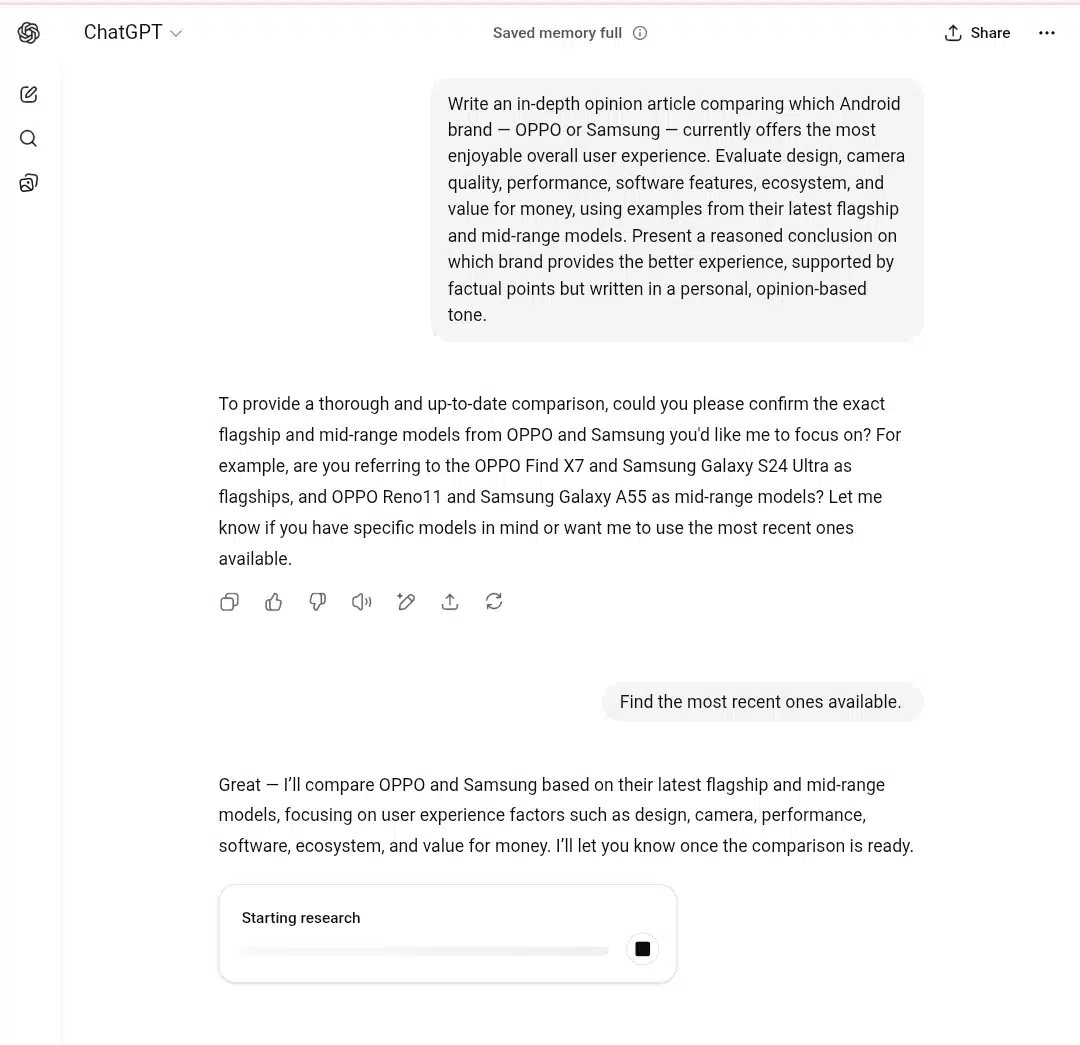
Both responses’ technical specifications, pricing, and feature comparisons align with publicly available information from manufacturers and tech reviewers.
Winner: Tie. Both demonstrated strong factual accuracy.
Citation Quality
Grok AI added citations throughout the article, but utilized a relatively small portion of its 86 accessed sources in the final write-up. Citations were embedded within the text as small domain references (androidauthority.com, reddit.com, gizmochina.com).
ChatGPT’s deep research featured significantly more inline citations with proper source attribution.
The platform displayed sources more prominently and systematically throughout each section, making fact-checking easier for readers.
Winner: ChatGPT. It has superior inline citation density and presentation.
Relevance and Focus
Grok AI maintained excellent focus on the core comparison across all requested dimensions (design, camera, performance, software, ecosystem, value). The response aligned with the opinion piece format, covering flagship and mid-range models as requested.
ChatGPT’s deep research also demonstrated strong relevance, systematically addressing each comparison category. However, it skipped the traditional article introduction, jumping straight into technical analysis – possibly due to its report-focused design.
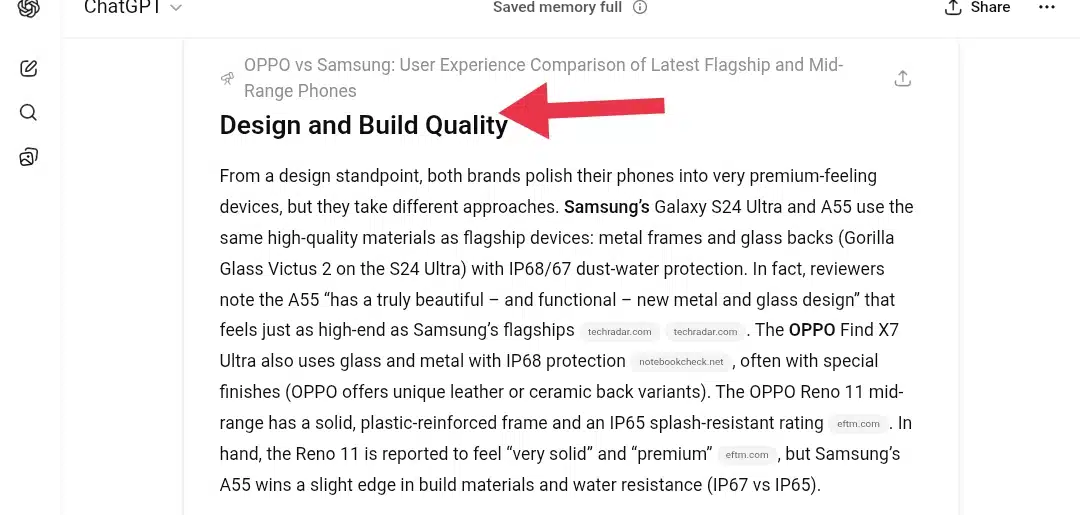
Winner: Tie. Both maintained excellent focus on the core comparison, though with different structural approaches suited to their design purposes.
Analysis Depth
Both platforms provided comprehensive analysis across multiple dimensions:
Grok AI offered nuanced insights like “OPPO’s designs evoke a sense of fun and creativity” and detailed technical comparisons with specific model examples. The analysis balanced technical specs with user experience considerations.
ChatGPT’s deep research delivered a thorough technical analysis with extensive benchmark comparisons and detailed feature breakdowns. The research felt more data-driven with specific performance metrics and reviewer quotes.
Winner: ChatGPT. It has more comprehensive technical depth.
Interface Usability
Grok AI provided a smooth user experience with automatic flagship identification and clear thinking time indicators. The response formatting was clean and article-like.
ChatGPT’s deep research transformed a static progress bar into a reflective one with no stated completion time. However, the final output formatting was well-structured with clear section divisions.
Winner: Tie. The two interface approaches reflected their distinct tool designs: Grok’s real-time feedback and ChatGPT’s comprehensive research process.
In this one, Grok AI excelled in speed, user experience, and format adherence, making it ideal for users wanting quick, well-structured opinion pieces. ChatGPT Deep Research dominated citation quality and technical depth and was better suited for users prioritizing comprehensive, well-sourced analysis over speed and narrative flow.
2. EU AI Act 2025 Research Summary
The prompt tested both platforms’ ability to summarize complex regulatory information using up-to-date sources. The results highlighted differences in directness, structure, and research efficiency for legal and technical content analysis.
Speed
Grok AI produced a complete, multi-section summary in under 1 minute, with a thinking time of approximately 45 seconds. The response was generated immediately without seeking any clarifications, showcasing high efficiency for in-depth regulatory research. ChatGPT’s deep research began by posing three clarifying questions about the detail level, focus areas, and audience before proceeding, then completed the research in an additional 2 minutes (as indicated in the interface). This extended the overall process compared to a direct response.
Winner: Grok AI – Significantly faster delivery without preliminary questions.
Accuracy Assessment
Both platforms delivered precise, current details on the EU AI Act (Regulation 2024/1689), including its risk-based framework, phased implementation, and specific provisions like bans on unacceptable-risk AI and GPAI requirements.
Grok AI accurately covered entry into force on August 1, 2024, key dates like February 2025 bans and August 2025 GPAI rules, risk categories, and impacts, drawing from official EU sources.
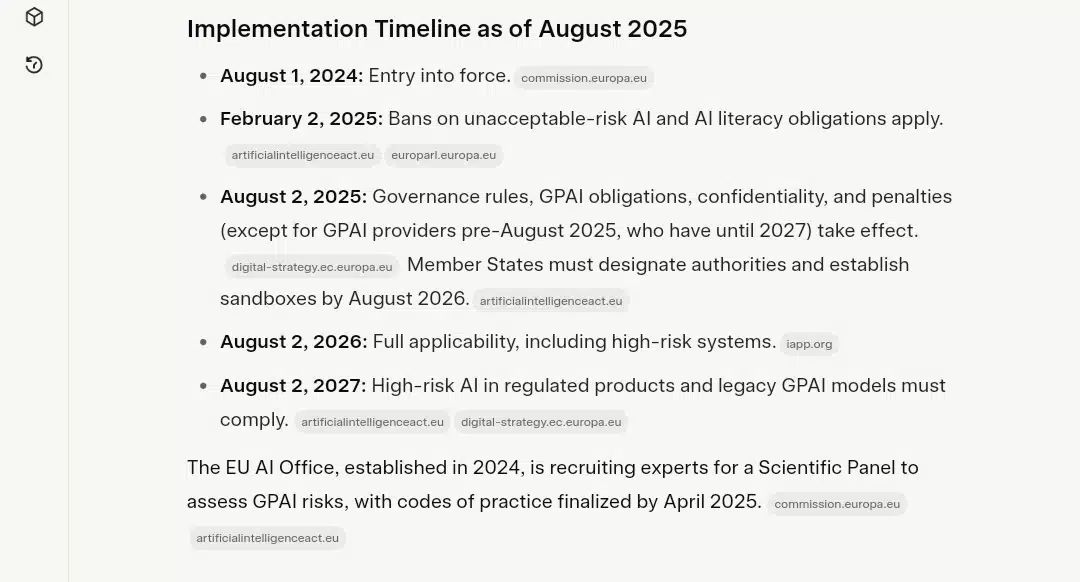
ChatGPT’s deep research provided correct information on the Act’s objectives, provisions (e.g., high-risk obligations, transparency for limited-risk AI), timeline (e.g., full applicability by 2026), and developer-focused impacts, aligned with official timelines and details.
Winner: Tie. Both maintained high factual accuracy based on credible sources.
Citation Quality
Grok AI featured numerous inline citations (over 30) integrated seamlessly after relevant statements, referencing government sites (e.g., ec.europa.eu), reputable outlets (e.g., euractiv.com, reuters.com), and expert analyses (e.g., brookings.edu, wikipedia.org for overviews), with proper numbering for traceability.
ChatGPT deep research used inline hyperlink-style citations embedded in the text (e.g., digital-strategy.ec.europa.eu, artificialintelligenceact.eu, europarl.europa.eu), primarily from official EU sources and some expert sites (e.g., skadden.com, iapp.org), with about 20-25 references across sections.
Winner: Grok AI. It has more extensive and numerically tracked citations for better verification on this one.
Relevance and Focus
Grok AI directly addressed the prompt’s requirements for a clear, concise summary of provisions, objectives, and impacts on developers, businesses, and users, staying tightly aligned without extraneous elements.
After clarifying questions (which included options for one paragraph vs. multi-section and audience focus), ChatGPT Deep Research’s response focused more on the Act. Afterwards, it shifted its attention to the implications for the AI-developing audience, which slightly diverged from my expectations.
Winner: Grok AI. It had superior direct relevance without needing clarifications already implicit in the prompt.
Analysis Depth
Grok AI offered thorough coverage with structured sections on introduction, objectives, provisions (detailed bullets for risk levels and GPAI), timeline, and impacts, including specifics like fines (€35M or 7% turnover) and recent updates (e.g., July 2025 GPAI guidelines), enhanced by analytical insights on global influence.
ChatGPT’s deep research provided solid depth across similar sections, with bullets for provisions and impacts, timeline details, and a focused paragraph on developers, but with some citation repetition and less emphasis on recent developments like the Scientific Panel recruitment.
Winner: Grok AI. Showed greater analytical depth and organization, including phased implementation nuances.
Interface Usability
Grok AI delivered a clean, readable format with headings, bullets, and inline citations, enabling easy navigation and immediate access to the full summary without interruptions.
ChatGPT’s deep research presented well-organized sections with embedded links. Still, the initial questioning phase added steps, and the interface noted “Research completed in 2m” with source counts, creating a more iterative experience.
Winner: Grok AI – Smoother, more user-friendly process with no delays from clarifications.
3. Big Brother Naija Trend Research
The third prompt tested both platforms’ ability to handle real-time entertainment content and social media trending analysis. The results revealed differences in their approaches to current pop culture research.
Speed
Grok AI delivered comprehensive results in under 1 minute with a displayed thinking time of just 57 seconds. The platform immediately began research without any clarification requests, demonstrating remarkable efficiency for trending content.
ChatGPT deep research initially requested clarification through three detailed questions before beginning research, then took additional time to complete the analysis. The total process extended significantly beyond Grok’s near-instantaneous response.
Winner: Grok AI. Had the fastest response time for the trend-focused prompt.
Accuracy Assessment
Both platforms provided accurate, up-to-date information about Big Brother Naija Season 10’s recent developments:
Grok AI correctly identified current season details (Season 10, “10/10” theme, July 26-27 premiere, Ebuka as host, 29 housemates) and recent events, including specific housemate interactions, power shifts, and trending moments.
ChatGPT’s deep research also delivered accurate information about housemate dynamics, relationship developments, and social media reactions, with specific details about recent episodes and public sentiment.
Winner: Tie. Both demonstrated strong factual accuracy for current events.
Citation Quality
Grok AI included extensive inline citations throughout the response, referencing social media sources (Instagram, Twitter handles like @jojo_Jwoh, @theNETng) and entertainment news sites (vanguardngr.com, legit.ng, pulse.ng). The citations were well-integrated and specific.
ChatGPT’s deep research provided comprehensive source listings with proper attribution to Nigerian entertainment outlets (Pulse Nigeria, Legit.ng, Vanguard, Daily Post, The Nation) and included social media report citations.
Winner: Tie. They provided excellent citation coverage from relevant sources.
Relevance and Focus
Grok AI maintained sharp focus on the requested timeframe and content areas. The response directly addressed trending topics, housemate highlights, and public sentiment without unnecessary deviation.
ChatGPT deep research: Despite asking clarifying questions that were already answered in the prompt (requesting confirmation of the 2-week timeframe and season details), the final response stayed well-focused on relevant trending content.
Winner: Grok AI. More efficient focus without redundant clarification requests.
Analysis Depth
Grok AI afforded exceptional depth with structured sections covering notable events, individual housemate profiles with sentiment analysis, and detailed trending topic breakdowns across multiple social media platforms. The organized table format for housemate analysis was particularly effective.
ChatGPT’s deep research comprehensively covered relationship dynamics, house events, social media buzz, and fan reactions. The narrative approach provided good context and a flowing analysis of interconnected developments.
Winner: Grok AI. Superb organization and comprehensive coverage with the structured table format.
Interface Usability
Grok AI offered a seamless user experience with immediate research initiation and a clear, well-organized presentation, including tables and structured sections. The response format was highly readable and scannable.
With ChatGPT’s deep research, while the final output was well-formatted, the initial clarification process was unnecessary, given that the information was already provided in the prompt (2-week timeframe, current season focus).
Winner: Grok AI – More streamlined process without unnecessary clarification delays.
So, what impressed and unimpressed me during this whole testing process? Let me lay out the pros and cons of Grok AI and ChatGPT deep research.
Grok AI vs ChatGPT Deep Research Pros and Cons
Grok AI
| Pros | Cons |
| Exceptional processing speed. Consistently delivers comprehensive results in 1–5 minutes with visible thinking time indicators, maintaining research momentum and workflow efficiency. | Source utilization inefficiency Accesses 80+ web pages but incorporates relatively few in final outputs, suggesting wasteful research methodology and questionable synthesis quality. |
| Direct response efficiencyImmediately begins research without unnecessary clarification requests, automatically identifying current models and trends without user hand-holding or workflow interruption. | Citation quality inconsistency Mixes authoritative sources with questionable ones (Reddit posts, unknown blogs) without distinguishing credibility levels, requiring additional verification steps. |
| Real-time content masteryDominates trending topics, social media sentiment analysis, and current events research with a superior understanding of cultural context and online conversations. | Limited technical analysis depth While fast and accurate for general research, it provides less comprehensive technical depth than research-focused alternatives for detailed decision-making. |
| Superior user experienceProvides smooth operation with clear progress indicators, clean formatting, immediate results access, and friction-free research sessions without interface problems. | Privacy and verification concerns –Incorporating social media sources and processing them quickly may introduce misinformation risks that require careful consideration for accuracy-critical work. |
| Excellent content organizationDelivers well-structured results with effective tables, logical section flow, and scannable formats that enhance comprehension without requiring reformatting. | |
| Current flagship identification automatically identifies and analyzes current models, trending topics, and recent developments without requiring the user to specify specific products or timeframes. |
ChatGPT Deep Research
| Pros | Cons |
| Superior citation quality Delivers extensive inline citations with proper source attribution and hyperlinks that lead directly to supporting evidence, making fact-checking effortless and verification reliable. | Slower processing time It takes 7+ minutes at minimum versus Grok’s 1–5 minutes, and static progress bars provide zero feedback during the lengthy research process. |
| Exceptional analytical depth Provides comprehensive technical analysis with specific benchmark data, detailed feature breakdowns, and research associate-level insights that connect macro trends with granular details. | Unnecessary clarification loops Consistently asks questions already answered in prompts (timeframes, focus areas, audience), adding frustrating delays to straightforward research requests. |
| Professional report formatting Outputs arrive structured with clear headings, systematic organization, and presentation quality suitable for stakeholders without additional formatting work. | No revision capability Cannot edit or adjust prompts once processing begins, forcing complete restarts for iterative research and wasting time on refined queries. |
| Comprehensive source verification Primarily uses authoritative sources (government sites, established outlets) with systematic attribution throughout sections, ensuring research credibility. | Workflow momentum disruptionLong processing times and clarification requests break research flow, making rapid exploration or follow-up investigations cumbersome. |
| Technical specification excellence Integrates detailed technical comparisons with specific performance metrics, reviewer quotes, and thorough feature analysis supporting decision-making. |
Different tools suit different needs, and both Grok AI and ChatGPT’s Deep Research excel in their own ways. Let’s look at which type of user will benefit most from each.
Who should use Grok AI vs ChatGPT deep research?
Choose Grok AI if you’re:
Social media managers and digital marketers
Grok AI excels at pulling information from social platforms and understanding current online conversations. Suppose you’re tracking brand mentions, analyzing social trends, or need to understand what people are actually saying about topics on Twitter, Reddit, and other platforms. In that case, Grok’s real-time social media integration gives you insights that traditional research can’t match.
Trend analysts and market researchers
When you need to catch emerging trends as they happen, especially those bubbling up from social media and online communities, Grok’s approach to gathering information from these sources is invaluable. It’s robust at understanding cultural shifts and viral topics before they hit mainstream media.
Journalists and news writers
Suppose you’re covering breaking stories or need to understand public sentiment around current events. In that case, Grok’s ability to synthesize information from social platforms and real-time sources helps you capture the complete picture of how stories develop online.
Influencers and personal brand builders
Understanding what’s resonating on social platforms, what conversations you should join, and how topics are being discussed across different communities is crucial for content strategy. Grok’s social media awareness makes it particularly useful for this kind of research.
Go for ChatGPT Deep Research if you’re:
Consultants and professional service providers
ChatGPT’s methodical approach and report format are ideal when you need to deliver structured, comprehensive reports to clients. The systematic way it breaks down research questions and investigates each part creates professional-quality deliverables that you can present directly to stakeholders.
Academic researchers and graduate students
The structured methodology of Deep Research aligns well with academic research practices. It shows its work, investigates multiple angles systematically, and provides a thorough analysis that works well as a starting point for literature reviews and academic projects.
Business analysts and strategy team workers
If your work involves creating detailed market analyses, competitive intelligence reports, or strategic assessments, ChatGPT’s organized approach to breaking down complex topics into manageable sections produces the kind of structured output that works well in corporate environments.
Occasional Researchers
If you only need deep research for personal projects, major purchases, travel planning, or settling occasional debates, ChatGPT’s free tier or Plus plan quotas are probably sufficient.
When neither might be good for;
Guaranteed Accuracy for Critical Decisions
Both are AI tools that can make mistakes or miss important nuances. If you’re doing medical research, legal work, financial analysis, or anything where errors could be costly, these should only supplement professional research methods, never replace them.
Access to Proprietary Sources
Neither platform can access academic databases behind paywalls, proprietary industry reports, or specialized professional databases. They’re excellent for publicly available information, but limited for highly specialized research needs.
Human-Level Critical Analysis
While both tools are impressive, they don’t replace human expertise in evaluating sources, understanding context, or making nuanced judgments about conflicting information. Use them to gather and organize information, not to make final conclusions.
Finally, is there a winner between Grok AI vs ChatGPT’s deep research?
I’d say a loud No. There are no winners when two things work differently and have what the other doesn’t. Here’s what you should do.
Use Grok AI to understand what’s happening on social media and online communities, or if you’re a heavy researcher who doesn’t want usage restrictions. It’s particularly valuable for tracking cultural trends and public sentiment.
Choose ChatGPT deep research if you need structured, professional-quality research reports that you can present to others, or if you can work within monthly usage limits. It’s better for formal analysis and systematic investigation.
Start with ChatGPT’s free tier to test whether AI research tools actually fit your workflow. Those 5 monthly tasks are restrictive, but they’ll show you if this type of research assistance is worth paying for. If you find yourself constantly hitting the limit and needing more social media insights, then consider Grok’s unlimited approach.
Neither tool is perfect, but both have found their place in my research workflow for different purposes. The key is understanding their strengths and working within their limitations rather than expecting them to handle every research need equally well.
Get to trying them out ASAP.
10 Frequently Asked Questions about Grok AI vs ChatGPT Deep Research
1. What’s the actual difference between Grok AI and ChatGPT Deep Research?
- Both features let AI explore in-depth topics and provide comprehensive research, but they work differently. Grok AI is built into the Grok 4 model and works more like an enhanced thinking process. It can access real-time information and reason through complex topics with massive context memory. ChatGPT’s Deep Research, on the other hand, is a separate feature that creates detailed research reports by breaking down your query into smaller questions and systematically investigating each part.
2. Can I use these features for free?
- With ChatGPT, yes, you get 5 Deep Research tasks monthly on the free plan, though you’ll only have access to the lightweight version. With Grok AI, the free tier only gives you basic Grok 3 access, so you won’t get the advanced DeepSearch capabilities that come with Grok 4. You’ll need to upgrade if you want to try Grok’s research features.
3. What happens when I hit my ChatGPT research limit?
- Once you use up your standard model tasks, ChatGPT automatically switches to the lightweight version if you have those remaining. If you’ve used everything up, you’ll have to wait until next month or upgrade your plan. The system won’t just cut you off mid-research – it’ll let you know when you’re running low.
4. Does Grok AI really have unlimited research usage?
- On paid plans, yes. Once you subscribe to SuperGrok or SuperGrok Heavy, there’s no monthly task counter ticking down. You can research as much as you want within their fair use policies. This makes it great if you’re the type who goes down research rabbit holes or needs to do extensive investigation work.
5. Which one gives more accurate and up-to-date information?
- Both can access current information, but they handle it differently. Grok AI integrates real-time data directly into its responses, while ChatGPT’s Deep Research systematically searches and verifies information from multiple sources before compiling it into a report. Both should perform well for breaking news or recent events, but ChatGPT’s methodical approach might catch more nuanced details.
6. Can I use these features for academic research?
- Absolutely, but remember that both are AI tools and should supplement, not replace, proper academic research. ChatGPT’s Deep Research is particularly good for academic work because it provides structured reports with clear methodology. Grok’s DeepSearch is better for exploratory research and brainstorming. Always verify important claims with primary sources.
7. What’s the context memory difference, and why does it matter?
- Grok’s SuperGrok handles 128,000 tokens, while SuperGrok Heavy manages 256,000 tokens. ChatGPT’s context varies by model but is generally smaller. More context memory means the AI can remember and work with much larger amounts of information in a single session – think of it like having a bigger desk to spread out all your research materials.
8. Is the lightweight version of ChatGPT’s Deep Research worth using?
- The lightweight version is still quite capable – it’s not like getting a watered-down product. It just uses a slightly less powerful model, so responses might be slightly less detailed or take shortcuts in reasoning. You probably won’t notice much difference for many research tasks, especially if you’re just getting background information on a topic.
9. Which platform is better for business research?
- It depends on your needs. Grok’s unlimited approach makes more sense if you do frequent, ongoing research and can’t afford to be limited by monthly quotas. ChatGPT’s Deep Research might be better if you do periodic deep dives and want structured, methodical reports. ChatGPT offers dedicated business plans for enterprises, while Grok currently has more of a consumer focus.
10. Can I get refunds if I don’t like the research quality?
- Both platforms have different refund policies, so check their terms of service. Generally, it’s worth trying the free tiers first to get a feel for the research quality. ChatGPT’s free plan gives you actual Deep Research tasks to test, while Grok’s free tier won’t let you experience DeepSearch, so you’ll need to rely on trial periods if available or their money-back guarantees.






